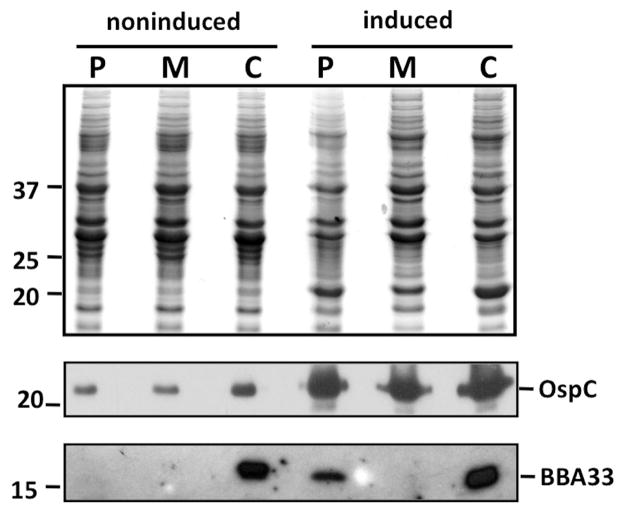Fig. 3.
BBA33 is produced under conditions that mimic the mammalian-like environment. Equivalent amount of protein were loaded for the B. burgdorferi parent strain ML23 pBBE22luc (P for parent), the Δbba33 strain HZ001 pBBE22luc (M for mutant) and the genetic complement HZ001 pHZ300 (C for complement) from cells that were either grown in media under ‘noninduced’ (32°C, 1% CO2, pH 7.6; left 3 lanes) or ‘induced’ conditions (37°C, 5% CO2, pH 6.8; right 3 lanes), separated by SDS-PAGE, and stained with Coomassie blue (top panel) or immunoblotted with anti-OspC (middle panel), or anti-BBA33 serum (bottom panel). Note that the only condition where the parent strain made BBA33 is shown; no other combination of temperature, CO2 content, or pH resulted in the detection of BBA33. The numbers on the side panel depict the molecular mass of protein markers (in kDa).

